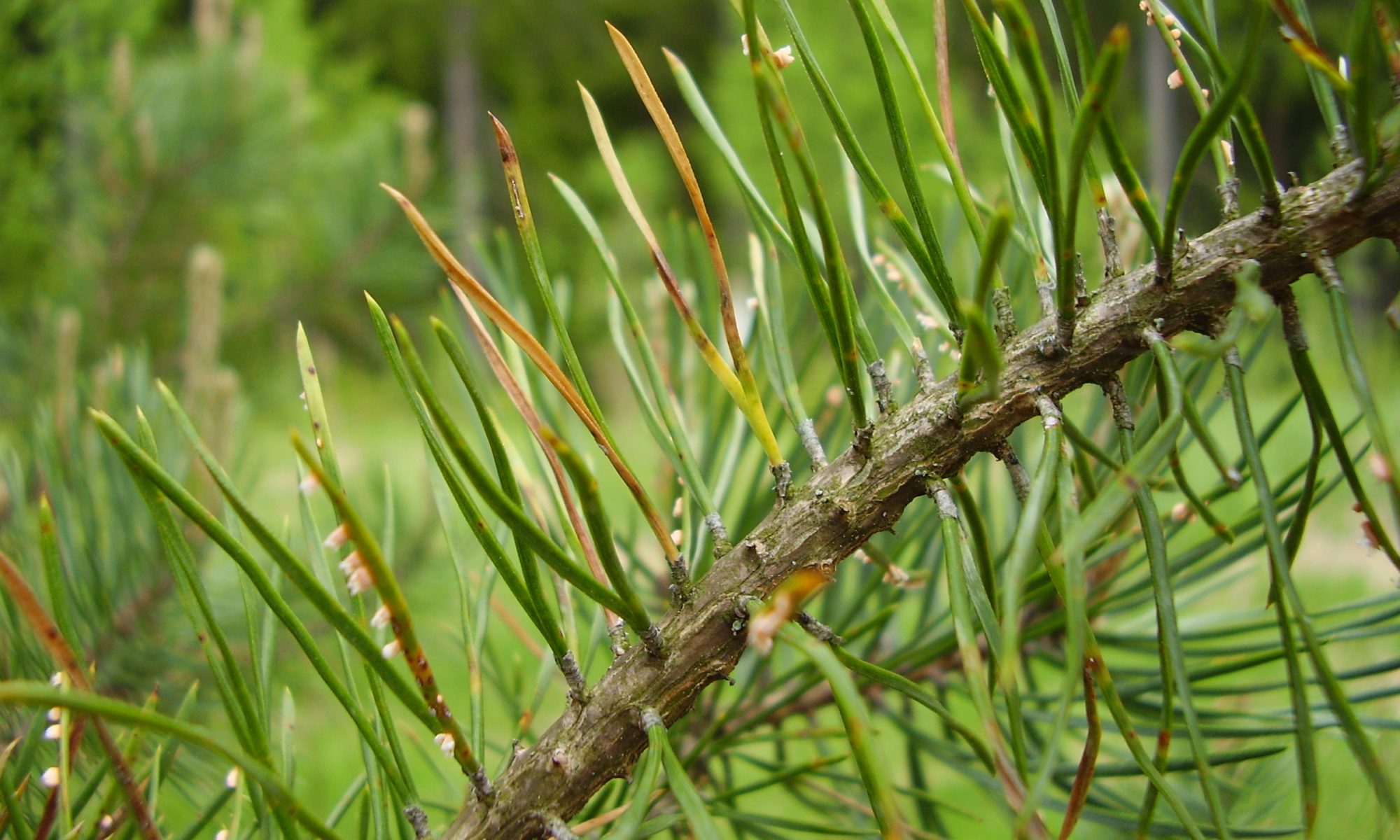Dr. Riikka Linnakoski, postdoc
 The general objective of my research has been to provide more information on associations between ophiostomatoid fungi, bark beetles and the commercially most important tree species in the boreal forests of Finland and neighboring Russia. Results from our previous studies provide the most comprehensive investigation of its kind conducted in the Northern Europe thus far, including both tree-killing and non-tree-killing bark beetles typical to the region. So far, only a small portion of bark beetle species existing in the boreal forests have been studied and the sampling does not cover the whole diversity of the habitats. The outcome of our survey work indicates that it is likely that even many of the relatively common ophiostomatoid species have yet to be discovered and described. These results emphasize the importance of developing a clear understanding of the possible threats of moving timber and wood products without knowledge of the micro-organisms that might also be moved.
The general objective of my research has been to provide more information on associations between ophiostomatoid fungi, bark beetles and the commercially most important tree species in the boreal forests of Finland and neighboring Russia. Results from our previous studies provide the most comprehensive investigation of its kind conducted in the Northern Europe thus far, including both tree-killing and non-tree-killing bark beetles typical to the region. So far, only a small portion of bark beetle species existing in the boreal forests have been studied and the sampling does not cover the whole diversity of the habitats. The outcome of our survey work indicates that it is likely that even many of the relatively common ophiostomatoid species have yet to be discovered and described. These results emphasize the importance of developing a clear understanding of the possible threats of moving timber and wood products without knowledge of the micro-organisms that might also be moved.
My current project entitled as “Bark beetle-associated fungi: diversity, pathogenicity and risks related to timber trade and climate change” will link the studies of the diversity of insect-fungus symbioses to the studies regarding the potential risks involved in these associations. In the project I will address the following research questions:
a) What is the taxonomic diversity of ophiostomatoid fungi in boreal forests?
b) How do climate change induced bark beetle outbreaks affect beetle-associated fungal communities and which fungal species have the highest potential as pathogens?
c) What is the pathogenicity of ophiostomatoid fungi under climate change scenarios?
d) What is the pathogenic potential of bark-beetle associated fungi on non-native host trees?
————————————————————————————————
Dr. Tommaso Raffaello, postdoc
————————————————————————————————
Dr. Fei Ren
 Plants live in close association with microbial symbionts, which may affect the host fitness, productivity and tolerance against biotic and abiotic stressors. The composition of plant microbial communities is influenced by plant genotypes and environmental factors, but little is known about the effect of plant pathogens on the structure of these communities.
Plants live in close association with microbial symbionts, which may affect the host fitness, productivity and tolerance against biotic and abiotic stressors. The composition of plant microbial communities is influenced by plant genotypes and environmental factors, but little is known about the effect of plant pathogens on the structure of these communities.
The root rot disease caused by the fungi of Heterobasidion annosum (Fr.) Bref. species complex has caused a great economic loss on forest industry in boreal zone.
In our project, we investigate the structure of bacterial communities associated with different tissues of asymptomatic and symptomatic (Heterobasidion-rotten) Norway spruce [Picea abies (L.) Karst.] trees. Three Norway spruce-dominated forest sites in the municipality of Mäntsälä (Uusimaa Region, Southern Finland) were chosen for samplings. The sites are located in privately-owned managed forest and are distributed in three selected plots. The elevation of the sites ranges from 87 to 95 m above sea level. In each plot, six Norway spruce trees were selected: three trees showing symptoms of Heterobasidion wood decay, and three trees without decay.
The impact of co-microbial infection on plant health particularly agricultural crops has received a lot of attention. Not much has been done on forest trees particularly on the identity of such microbes. In the project, our aim was to investigate the bacterial community structure comparing asymptomatic and symptomatic Norway spruce trees naturally infected by Heterobasidion sp. under field conditions as well as how they are impacted by transcriptomic and terpenoid composition. We hypothesized that bacterial community of different tissues of asymptomatic and symptomatic Heterobasidion-infected Norway spruce trees differs from each other.

 The main research activity focuses on the basidiomycete Heterobasidion annosum s.l., a fungal pathogen which is widely regarded as the most important necrotrophic pathogen of conifer trees. The current project involves the molecular characterization of putative nectrotrophic effectors which are specific proteins that promote the fungal infection and sustain the fungal growth into the host.
The main research activity focuses on the basidiomycete Heterobasidion annosum s.l., a fungal pathogen which is widely regarded as the most important necrotrophic pathogen of conifer trees. The current project involves the molecular characterization of putative nectrotrophic effectors which are specific proteins that promote the fungal infection and sustain the fungal growth into the host.